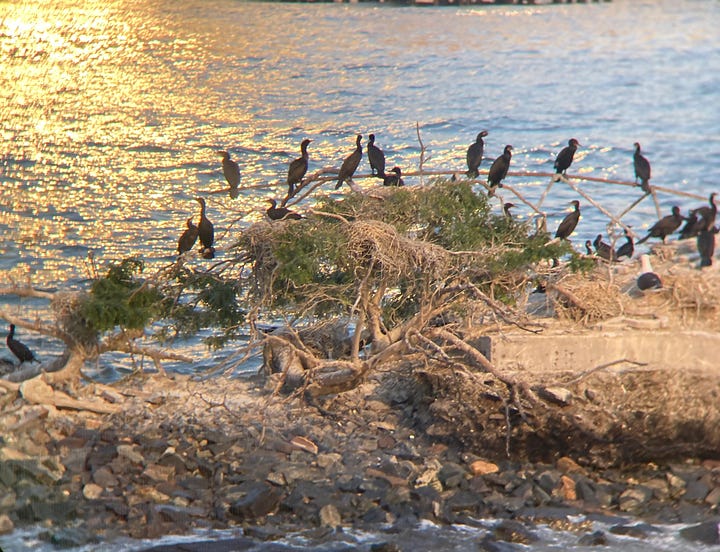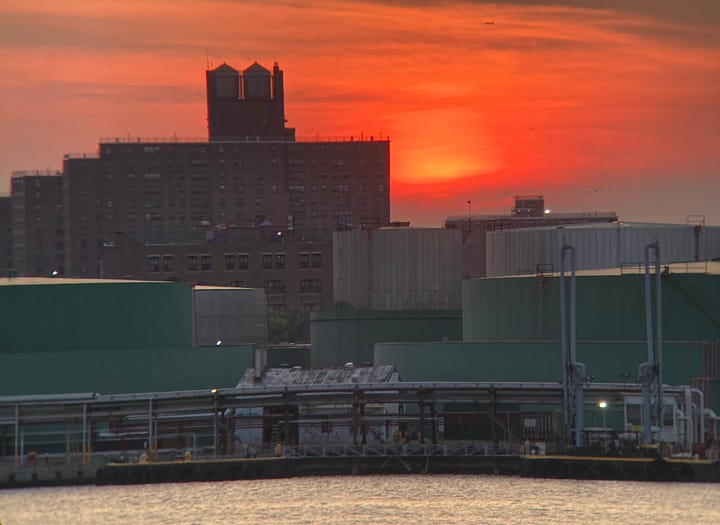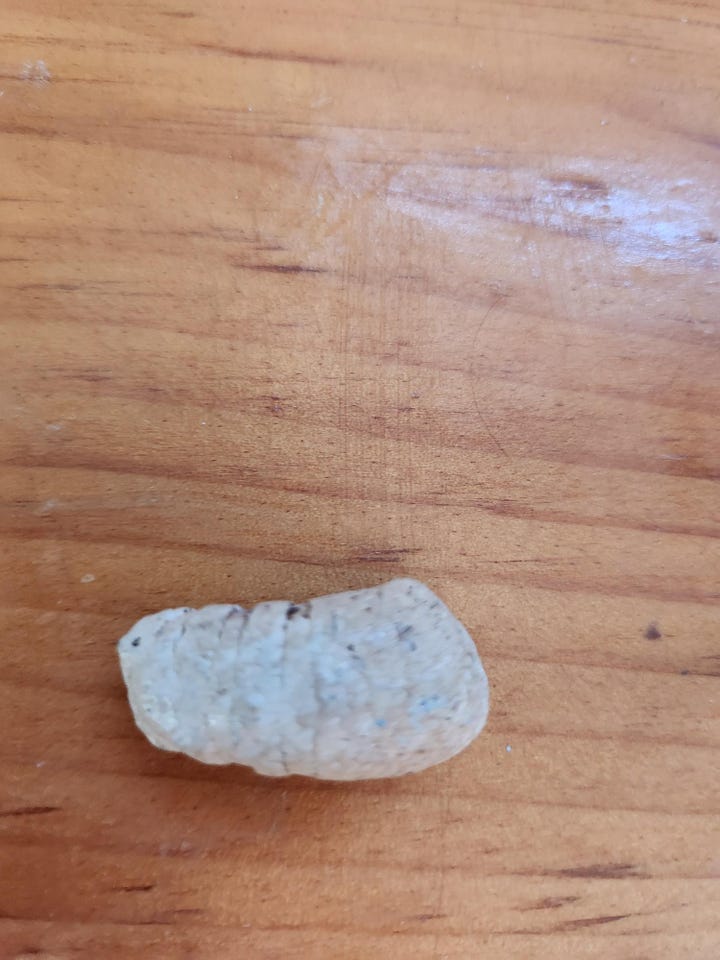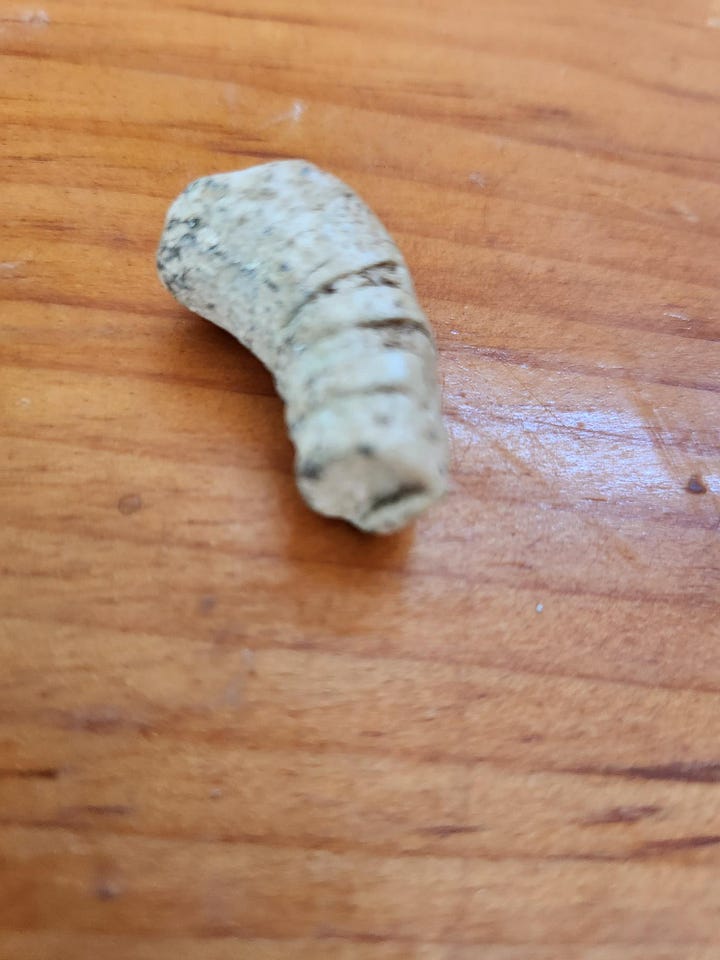Business first: Landlubber was in the New York Times this week (sort of!) There was a write-up of the tours I’m doing for Classic Harbor Line of the East River’s abandoned islands and Laurel Graeber, the writer, was kind enough to link this newsletter in her article, so everyone behave while the nice readers from the times come through.
Those tours run through the end of August (which is flying by at quite a clip if you ask me). I’m leading them the next two Sunday and Monday nights, and then Gabriel Willow is closing them out on the last weekend of the month. There will be other boat tours in the near future, but these tours are really special and they won’t come back until at least next summer. These islands (U Thant, Mill Rock, North and South Brother Island), host colonies of herons and cormorants this time of year, and can’t be approached except by boat, and these boats are the only boats going out there right now.
The good news for you is that there are still tickets available! In my land life, I always find Sunday and Monday night stressful. I rush home early, only to realize that it’s impossible to get anything done with the week hanging over my head, and then I get stressed about all the things I’m not doing, and throw myself into a cooking project, only to realize I’m creating more chores for myself. If that kind of anxiety is something you relate to, you can make the choice now to be on a boat with me at sunset up above Hell Gate watching the eerie industrial shoreline glow orange as snowy egrets and black-crowned night herons converge on old abandoned islands for the night. The ticket comes with a drink and food, and gives you close access to really wonderful wading bird nest sites that are otherwise inaccessible to New Yorkers. You can book here:


One of the things I’m really passionate about is getting people out on the water in New York City. New Yorkers are wedged right up against the ocean (ever heard of it?) and we have big amazing rivers, and tidal straits, and marshes coursing through our neighborhoods and boroughs, but often, for a variety of reasons, we don’t get the chance to become familiar with those waters. Until relatively recently, the relationship between the city and its waterways had languished for nearly a century. Planners cut off the shorelines with highways as companies such as General Electric and Ford Motors put all kinds of toxic stuff in the water. People dumped old cars in the marshes for decades. Then, when the waterfront was at its lowest point, private companies bought up the old piers and shorelines, surrounded them in chain link fencing, and basically penned us all inland so they could sit on that real estate, using it for parking and storage.
I’ve tried to help people overcome some of those impediments, leading kayak adventures out in Jamaica Bay, and teaching sailing, and inshore ecology, and fishing around the city, while restoring coastal vegetation and shoreline habitat with public school kids from all over the city. I like these Classic Harbor Line tours because unlike most of those programs, which involved working with specific schools or groups of students or neighborhood populations, anyone can go to the Classic Harbor Line website, book a ticket, and be on a boat as early as tomorrow night. It’s a fun way to share that work with the public, i.e. all of you. The last thing I’ll say is that the weather is supposed to be gorgeous these next two nights. Okay, that’s my pitch. (Here’s the link for tickets one more time.) Now, a Landlubber mystery!
Earlier this summer, reader Amy Simmons sent in a photo of what she correctly identified as a Civil War era bullet. The catch? It was found on Muscongus Bay, Maine, about 500 miles from Gettysburg, the nearest site where those antique bullets are commonly discovered. This week’s letter is about the bullet, and the Pine Tree State, and the joyous speculation of beachcombing.


One of the vexing things about finding an object washed up on the shore is that its story will almost always be a little mysterious. Beach finds come from the murky, unknowable depths, and all we can really do is assess plausible options about their provenance. The flip side is that that open-endedness sends you in all kinds of fun directions, feeling out towards possibilities without needing to settle on any one answer. At the end of the day, at least in my opinion, that process teaches you more about the world (if not the object) than it would if there was a clear answer that you could just look up. So it was for me with this bullet!
Maine isn’t the first place my mind goes when I think of the Civil War, and my initial impulse was to dig back through the state’s earlier history. That region has a long history of conflict, with European powers and early Americans shooting at each other all over the woods and the coast there. The reason, or one of the reasons, was that it was full of natural resources. There were beavers, whose furs were coveted to make warm, waterproof hats, and unfathomable quantities of fish off the coast. Its port towns were essential to moving that stuff around, too, and controlling Maine came with all kinds of strategic advantages and opportunities to make a profit.
One of the natural resources people don’t talk about very much in the context of the colonial and post-colonial periods, at least compared to say, sugar, or tobacco, was the old-growth Eastern white pine forests that covered much of the state. By the 1600’s, the British Empire had basically run out of tall, straight trees that they could use as the masts of ships. England had been deforested, and as ships became larger and larger, the strong, tall, straight pieces of wood became extremely important to shipbuilding. The British were reluctant to lose access to the forests on the northeast coast, and repeatedly sparred with the French and the Americans over it. Early North American conflicts with European powers from the revolution on had all had northern skirmishes that took place out on those rugged coasts and woodlands. You can, I’ve heard, still see some of the marks that British surveyors left on the finest white pines to mark them as property of the crown. Anyway, my first thought was that this bullet might have been a prototype of those civil war bullets, fired, perhaps, in the decades leading up to the war. The War of 1812, during which the British had occupied the state’s entire coastline, seemed like a good bet.
But that theory was quickly shut down by a friend who knows more about both Maine and the Civil War than I do (someone who, as a child, I guess, played with plastic army men instead of rubber dinosaurs). Those civil war bullets (called Minié balls after their inventor Claude Etienne Minié) weren’t invented until 1846, he explained. They made their combat debut during the Crimean War in the 1850’s, and prior to that, rifles fired musketballs and musketballs alone. Reluctantly, I zeroed in on Maine’s Civil War history, which turned out to be a little more substantial than I’d realized.
The state produced a storied combat unit during the war, the 20th Maine Infantry Regiment, which was made up of around 1,500 volunteers from all over the state. The regiment is best-known for running out of ammo at Gettysburg, and then, instead of retreating, charging bravely down a hill with their bayonets out, scattering the Confederate forces below and preventing them from flanking the Union position. One soldier from the 20th who certainly continued to fire his weapon upon his return to Maine was the regiment’s flag bearer, Andrew Tozier, who became a cattle rustler and heist man after coming home. He was convicted of a series of robberies before receiving a pardon from the Maine governor Joshua Chamberlain (it probably helped that Chamberlain had been Tozier’s commander in the 20th). Perhaps, I thought, one of Tozier’s bullets had ended up on the shore.
There was also, I discovered, a single Civil War battle in Maine. The Battle of Portland Harbor, as it’s called, was a peripheral, ragtag naval skirmish set off by a confederate raiding party in 1863. The pirates had been sailing around off the coast of New England to disrupt northern shipping capabilities by attacking civilian boats. The plan was essentially to sow chaos and spread fear, and it worked pretty well. Newspapers ran with the story, generating the impression in those coastal Union outposts to the north that southern terrorists might appear on the shore at any moment, ready to kill, pillage, and leave sailors bobbing out in the ocean on life rafts.
In the days leading up to the battle, the confederates had switched boats to evade the Union Navy, capturing a fishing vessel called Archer and burning the Tacony, the three masted sailboat that they’d captured from the Union previously. Disguised as fishermen, they pulled into Portland in the middle of the night and then, after laying low for a day, raided a federal pier at dawn, taking off with a 100-foot sailboat called Cushing that belonged to the bygone United States Revenue Cutter Service (basically a navy run by the treasury department for customs enforcement).
A small battalion of Union soldiers gathered to chase the terrorists down, commandeering a sidewheel excursion boat called Chesapeake, (which probably wasn’t so different from the General Slocum) and another steamer called Forest City. They piled a few heavy guns aboard, and handed out rifles to about a hundred civilian volunteers who hopped aboard. The mayor of Portland apparently captained the sidewheeler, which was the faster chase boat. When he caught up to the first group of confederates they had, for the second time in as many days, pulled a “burn-your-own-boat” gambit (this time, presumably, to prevent the Cushing from returning to federal service). The ammunition and gunpowder aboard the Cushing caught fire, sending the boat up in a dramatic explosion. The pirate crew of the Cushing was captured in lifeboats shortly before their friends in the stolen fishing vessel Archer.
If you’re hoping that I can prove that one of the bullets that was fired (or blew up) off of Portland Harbor traveled the 45 miles north to Muscongus Bay, I’m sorry to disappoint you. It seems kind of unlikely to me, and my war-obsessed friend pointed out that of course, after the war, soldiers who came home would have brought weapons and ammunition with them. The bullet could have been fired in the 1990’s by an antique rifle enthusiast for all I know. That said, a lot of ordinance went off when the Cushing exploded, and it seems remotely plausible, if impossible to prove, that a piece of wood with a bullet lodged into it could have floated up to Muscongus Bay , and then disintegrated over the last century and a half, leaving the bullet to wash up on its own.
But the most likely story, in my opinion, has to do with seabirds, our changing relationship to nature, and the story of the historical abuse and recent, tentative restoration of Maine’s “natural resources,” which we now refer to, more appropriately, I think, as “wildlife.” That and more, next week at Landlubber!






